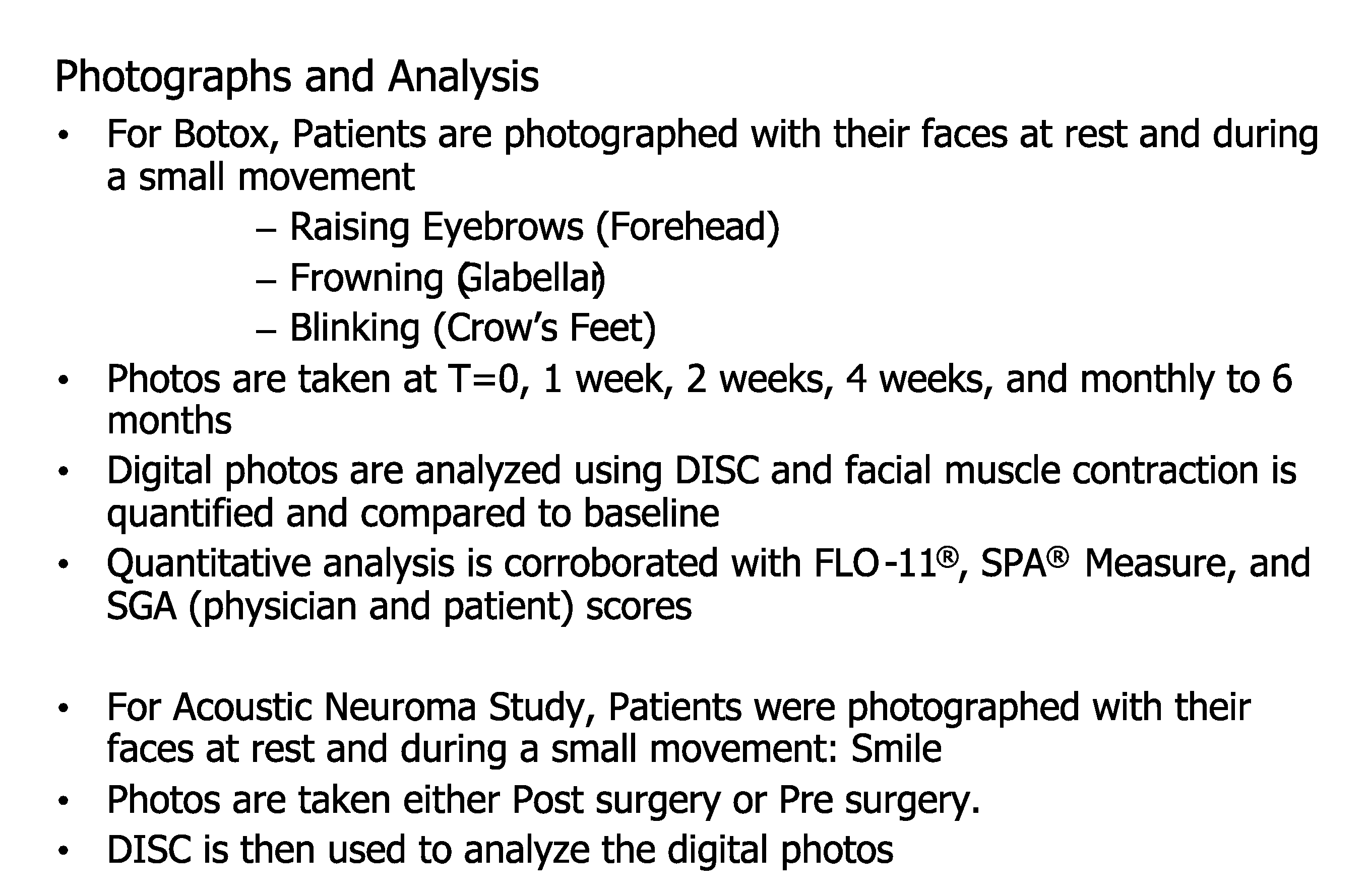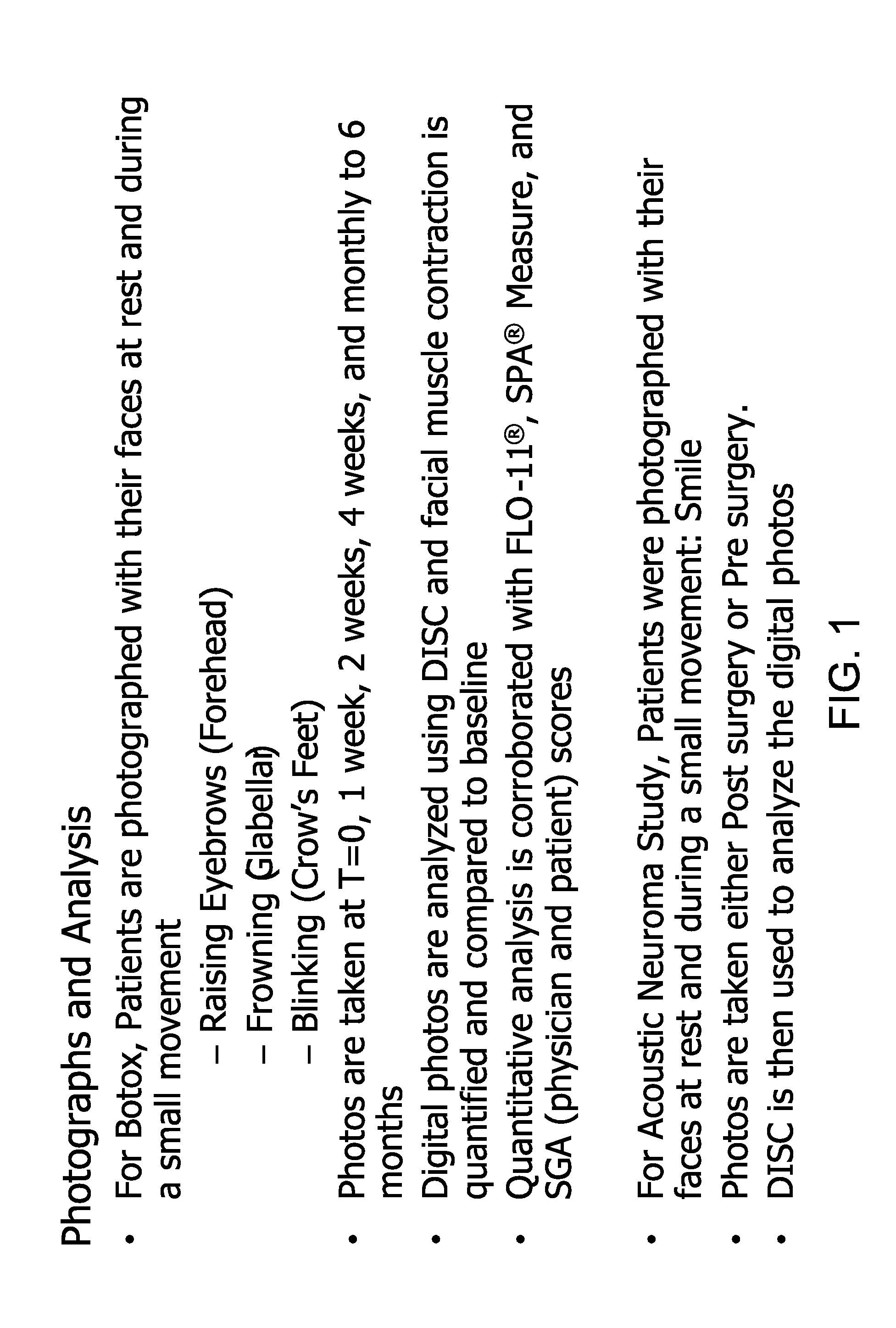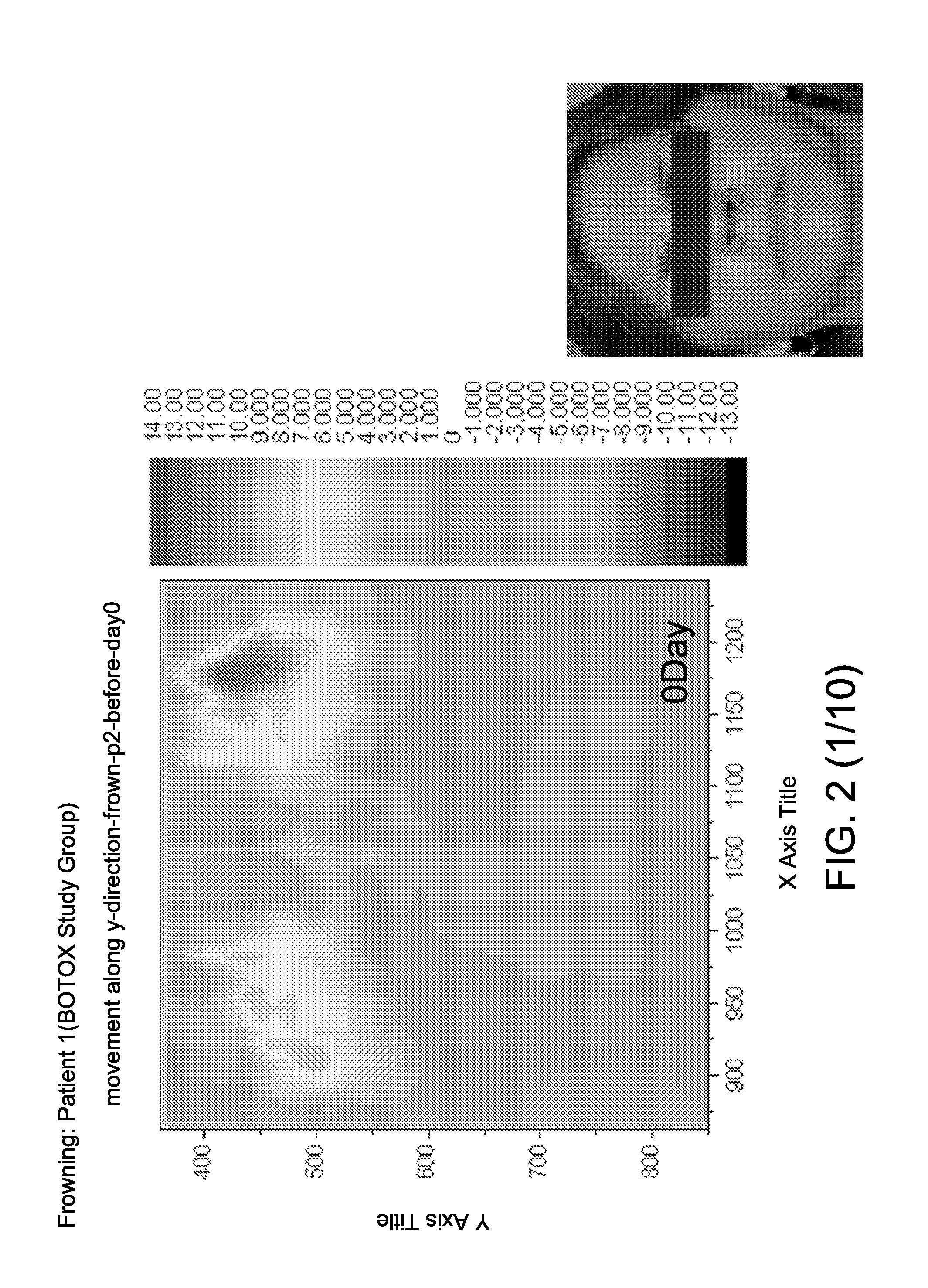Methods Useful in Optimizing the Treatment of Neuropathies and Targeting Tissues with Cosmetic Botulinum Injections
a neuropathology and botulinum injection technology, applied in the field of cosmetic treatments, can solve the problems of facial musculature, many invasive techniques, and inability to objectively quantify the direct effect, and achieve the effects of improving the current standard of care for cosmetic treatments, small improvement, and difficult detection
- Summary
- Abstract
- Description
- Claims
- Application Information
AI Technical Summary
Benefits of technology
Problems solved by technology
Method used
Image
Examples
examples
[0026]Examples of data generated from the present methods are shown in FIGS. 2-7. In addition, the following work has been conducted.
[0027]As noted above, DISC is based on following the deformation of a correlated set of speckles and generates an essentially complete mapping of the deformation of the skin pores, thereby determining the loci where stress is applied to the skin and the specific combination of muscles involved in a particular motion. Botulinum Toxin (BT) has a number of clinical applications, including cosmetic treatment of facial lines. (In the description above, we have referred to the widely used formulation of BT marketed as BOTOX®, however it is to be understood that any cosmetically acceptable agent that similarly induces paralysis could be used and analyzed by the present methods in the same manner.) Previously, the degree and duration of effects on the muscles of facial expression have been evaluated using qualitative subjective measurements (Carruthers and Car...
PUM
 Login to View More
Login to View More Abstract
Description
Claims
Application Information
 Login to View More
Login to View More - R&D
- Intellectual Property
- Life Sciences
- Materials
- Tech Scout
- Unparalleled Data Quality
- Higher Quality Content
- 60% Fewer Hallucinations
Browse by: Latest US Patents, China's latest patents, Technical Efficacy Thesaurus, Application Domain, Technology Topic, Popular Technical Reports.
© 2025 PatSnap. All rights reserved.Legal|Privacy policy|Modern Slavery Act Transparency Statement|Sitemap|About US| Contact US: help@patsnap.com



